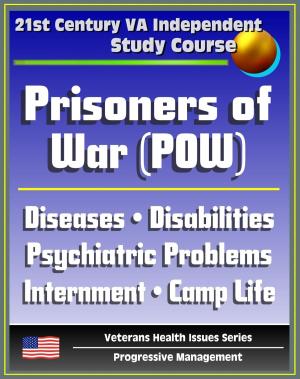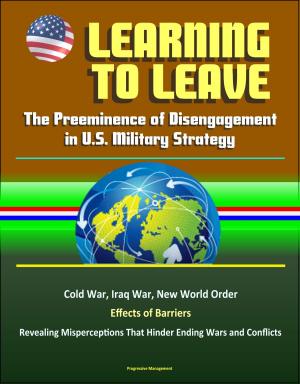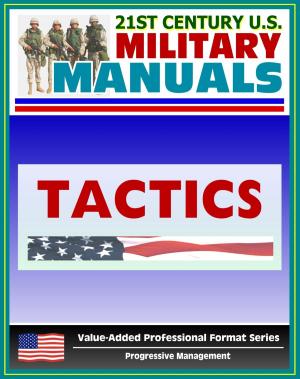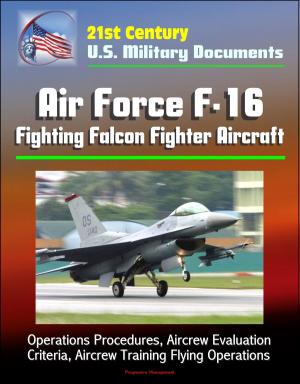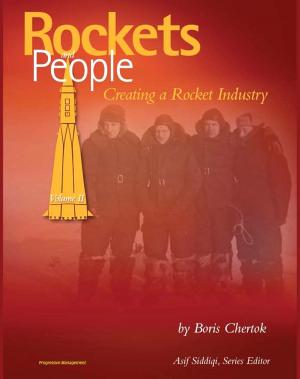21st Century FEMA Study Course: An Introduction to Hazardous Materials (IS-5.a) - Government Roles, Toxic Chemicals as WMD, Materials Safety Data Sheet, Regulations, Human Health
Nonfiction, Science & Nature, Science, Biological Sciences, Ecology, Environmental Science| Author: | Progressive Management | ISBN: | 9781458001634 |
| Publisher: | Progressive Management | Publication: | June 15, 2011 |
| Imprint: | Smashwords Edition | Language: | English |
| Author: | Progressive Management |
| ISBN: | 9781458001634 |
| Publisher: | Progressive Management |
| Publication: | June 15, 2011 |
| Imprint: | Smashwords Edition |
| Language: | English |
This vital Federal Emergency Management Agency (FEMA) independent training course manual from the Emergency Management Institute (EMI) is intended to provide a general introduction to hazardous materials that can serve as a foundation for more specific studies in the future. The course has five Units which are outlined below. No prior knowledge of the subject is required or assumed. At the end of the course, the participant should be able to:
Explain the roles of Federal, State, Tribal and local governments in reducing hazardous materials risks through Health and Environmental Regulations; Discuss the two major hazardous materials identification systems used within the United States; Identify possible terrorist’s targets of opportunities in the use of toxic industrial chemicals (TIC) as Weapons of Mass Destruction (WMD); Identify locations where hazardous materials are commonly found and how to determine their potential health effects; Describe basic terms that pertain to exposures to hazardous materials; Read and interpret a materials safety data sheet (MSDS); Explain how hazardous materials enter the body and contaminate the environment; Describe what communities can do to increase their emergency preparedness to respond to hazardous materials incidents; and identify steps individuals and communities can take to protect themselves during a hazardous materials release.
The five Units are:
Unit 1: Health and Environmental Regulations. This Unit explains the roles of Federal, State, Tribal and local governments in reducing hazardous materials risks, and reviews the key provisions of critical Federal legislation.
Unit 2: Hazardous Materials Identification Systems. This Unit discusses the two major hazardous materials identification systems currently being used in the United States. It also outlines how communities should be able to recognize a terrorist use of toxic industrial chemicals as Weapons of Mass Destruction (WMD).
Unit 3: Identifying Hazardous Materials. This Unit provides an overview of locations in which these materials are commonly found and discusses ways of determining what particular chemicals, with what health effects, exist in these locations.
Unit 4: Hazardous Materials and Human Health. This Unit introduces many of the basic terms used to discuss hazardous materials problems, and explain how hazardous materials enter and move through the body and the environment.
Unit 5: Preparing for Hazardous Materials Incidents. This Unit explains what local communities can do to increase their emergency preparedness to respond to hazardous materials incidents of any size. It also identifies steps individuals can take to protect themselves during a hazardous materials release.
As a bonus, this compilation includes Terrorism and Other Public Health Emergencies, A Reference Guide: a comprehensive book covering all aspects of terrorism and the threats posed by biological, chemical, and radiation agents. Planning For The Unthinkable: Preparation And Response In Public Health * Biological Agents * Chemical Agents * Radiation Emergencies * Terrorism And The Food Supply * Environmental Safety And Testing * The Role Of The Federal Government * Self-Care For Media * Range Of Public Reactions * Risk Communications During A Terrorist Attack Or Other Public Health Emergency * History Of Biological, Chemical, And Radiation Emergencies * Acronyms * Selected Web Sites * Epidemiology Glossary * Descriptions of Selected Sections of Acts Related to Public Health Emergencies * Family Disaster Planning—Five Steps to Safety * Disaster Supplies Kit * Personal Workplace Disaster Supplies Kit * Self-Monitoring Checklist * Reducing Stress and Renewing Energy * Helping Children and Adolescents Cope with Violence and Disasters.
This vital Federal Emergency Management Agency (FEMA) independent training course manual from the Emergency Management Institute (EMI) is intended to provide a general introduction to hazardous materials that can serve as a foundation for more specific studies in the future. The course has five Units which are outlined below. No prior knowledge of the subject is required or assumed. At the end of the course, the participant should be able to:
Explain the roles of Federal, State, Tribal and local governments in reducing hazardous materials risks through Health and Environmental Regulations; Discuss the two major hazardous materials identification systems used within the United States; Identify possible terrorist’s targets of opportunities in the use of toxic industrial chemicals (TIC) as Weapons of Mass Destruction (WMD); Identify locations where hazardous materials are commonly found and how to determine their potential health effects; Describe basic terms that pertain to exposures to hazardous materials; Read and interpret a materials safety data sheet (MSDS); Explain how hazardous materials enter the body and contaminate the environment; Describe what communities can do to increase their emergency preparedness to respond to hazardous materials incidents; and identify steps individuals and communities can take to protect themselves during a hazardous materials release.
The five Units are:
Unit 1: Health and Environmental Regulations. This Unit explains the roles of Federal, State, Tribal and local governments in reducing hazardous materials risks, and reviews the key provisions of critical Federal legislation.
Unit 2: Hazardous Materials Identification Systems. This Unit discusses the two major hazardous materials identification systems currently being used in the United States. It also outlines how communities should be able to recognize a terrorist use of toxic industrial chemicals as Weapons of Mass Destruction (WMD).
Unit 3: Identifying Hazardous Materials. This Unit provides an overview of locations in which these materials are commonly found and discusses ways of determining what particular chemicals, with what health effects, exist in these locations.
Unit 4: Hazardous Materials and Human Health. This Unit introduces many of the basic terms used to discuss hazardous materials problems, and explain how hazardous materials enter and move through the body and the environment.
Unit 5: Preparing for Hazardous Materials Incidents. This Unit explains what local communities can do to increase their emergency preparedness to respond to hazardous materials incidents of any size. It also identifies steps individuals can take to protect themselves during a hazardous materials release.
As a bonus, this compilation includes Terrorism and Other Public Health Emergencies, A Reference Guide: a comprehensive book covering all aspects of terrorism and the threats posed by biological, chemical, and radiation agents. Planning For The Unthinkable: Preparation And Response In Public Health * Biological Agents * Chemical Agents * Radiation Emergencies * Terrorism And The Food Supply * Environmental Safety And Testing * The Role Of The Federal Government * Self-Care For Media * Range Of Public Reactions * Risk Communications During A Terrorist Attack Or Other Public Health Emergency * History Of Biological, Chemical, And Radiation Emergencies * Acronyms * Selected Web Sites * Epidemiology Glossary * Descriptions of Selected Sections of Acts Related to Public Health Emergencies * Family Disaster Planning—Five Steps to Safety * Disaster Supplies Kit * Personal Workplace Disaster Supplies Kit * Self-Monitoring Checklist * Reducing Stress and Renewing Energy * Helping Children and Adolescents Cope with Violence and Disasters.



